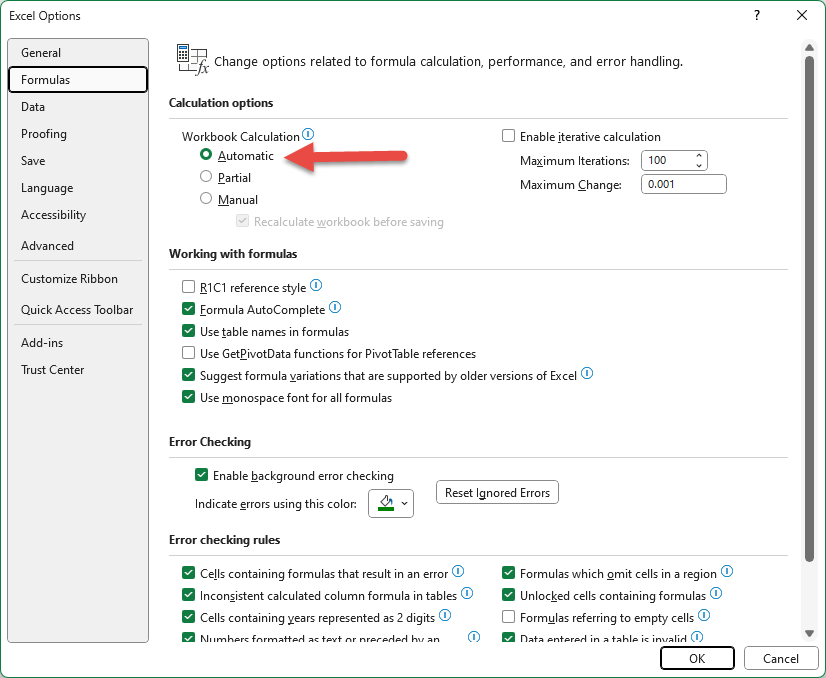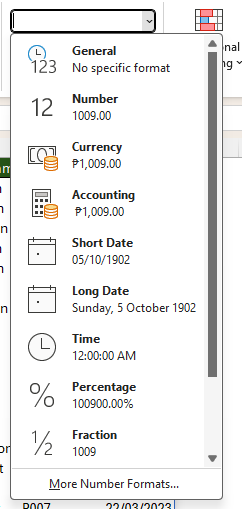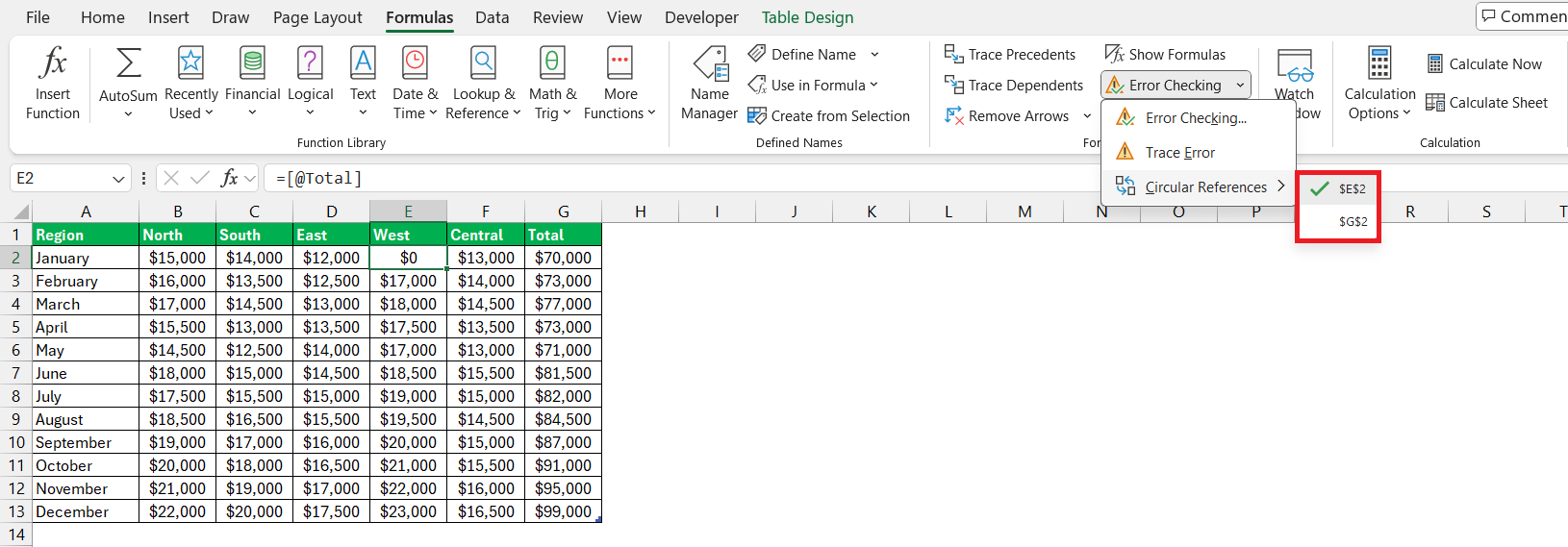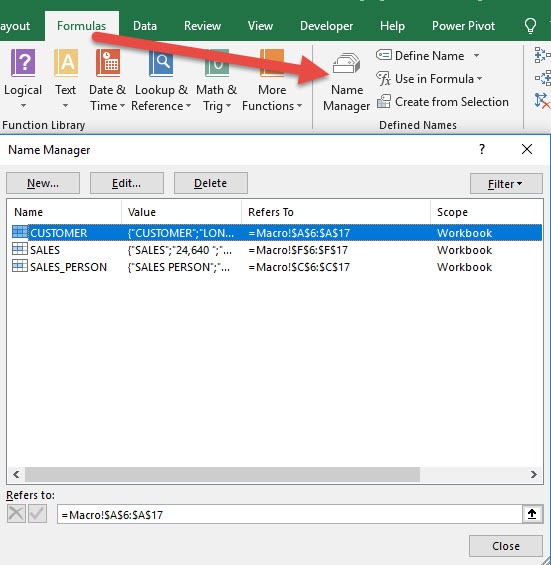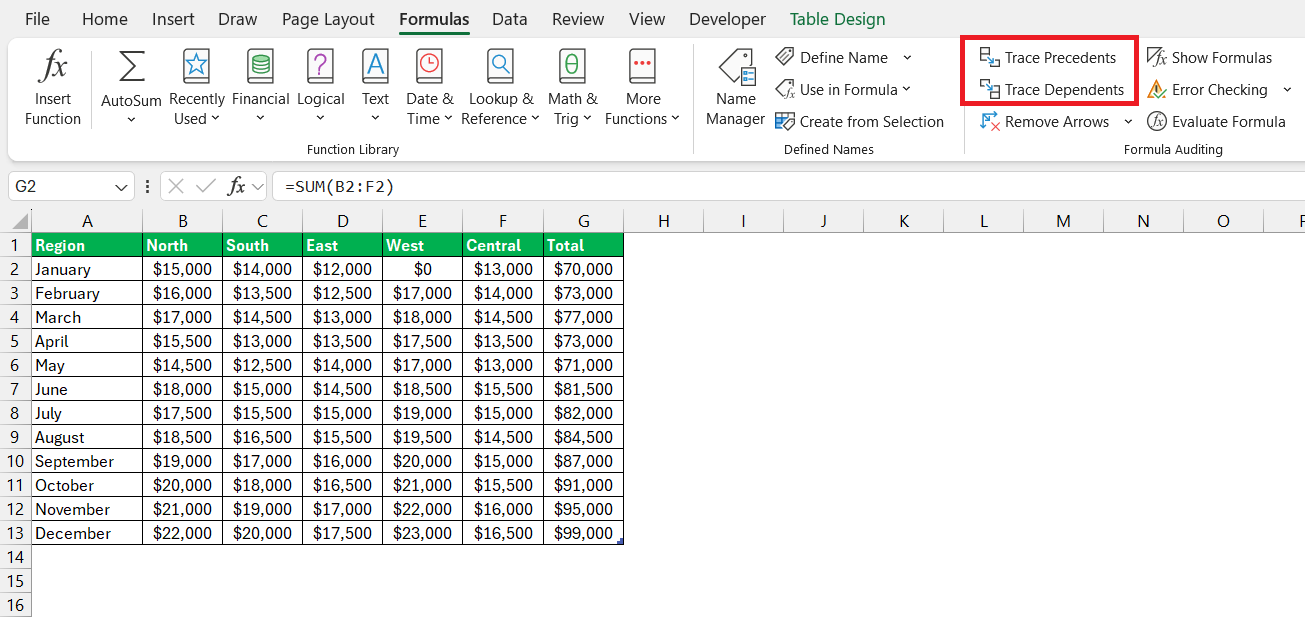Excel formulas are undoubtedly the heart of your spreadsheet’s functionality. With them, you can transform raw data into meaningful information, automating tasks that would take hours to complete manually. From simple calculations like adding up a column of numbers to complex financial forecasting, formulas can make you incredibly efficient in your work. They really are the magic behind Excel’s power, turning it into a dynamic tool that’s essential in various fields like finance, education, and project management.
Key Takeaways
- Excel formulas may not function properly if cells are formatted as text, unexpected keys are pressed (such as CTRL + `), or if numbers are incorrectly enclosed in double quotes. Ensuring that cells are formatted correctly, reviewing the formula for unintended keystrokes, and verifying the proper use of quotes can help in resolving issues.
- Errors in Excel formulas can often arise from extra spaces, mismatched parentheses, or incorrect use of symbols. To fix these issues, users should carefully check for and remove unnecessary spaces, ensure all parentheses are correctly matched and placed, and verify that no non-functional symbols are included in the formula.
- When faced with non-working Excel formulas, it is crucial to review the selected table range, check for accidental text-formatting, and confirm the correct syntax. Using these steps, users can systematically troubleshoot and correct the formula to achieve the desired results.
Signs Your Excel Formula Isn’t Working Properly
When your Excel formula isn’t responding as expected, a few telltale signs can alert you to the issue at hand. Perhaps you’re staring at a cell filled with an unexpected error message like #VALUE! or #NAME?, instead of your anticipated result. Or maybe the cell is just blank, curiously immune to the commands you’ve typed. Some formulas might even appear as plain text, a clear sign that Excel isn’t recognizing them as formulas at all. If you’re updating cells expecting a ripple effect of changes but nothing happens, it’s another indication that your formulas may require some troubleshooting.
Common Culprits of Broken Excel Formulas
Calculation Settings Mishaps: Manual vs. Automatic
You know those times when you enter a formula, expect it to magically compute results, but it just sits there, indifferent to your expectations? More often than not, the root of such indifference can be traced back to Excel’s calculation settings. Excel offers three settings for its calculation mode: Automatic, Manual, and Automatic Except for Data Tables.
With Automatic Calculation enabled, every time you alter a formula or input data, Excel instantly recalculates all the dependent cells. It’s like having an ever-vigilant assistant ready to update your data with each change. However, switch to Manual Calculation, and that attentive assistant takes a break. Your spreadsheet will only update calculations when you explicitly press F9 or go through the Data tab, commanding Excel to refresh.
Automatic Except for Data Tables is a bit of a compromise. It allows Excel to automatically recalculate changes except for those inside Data Tables, a feature less commonly used unless you’re delving into scenario analysis.
Remember, if your data isn’t adding up as it should, it might be time to check these settings. Go to File > Options > Formulas, and see if Automatic is selected to ensure real-time updates.
Text Format Cells Disguising as Numbers
Have you ever entered a formula and instead of seeing the calculated result, you get exactly what you typed out? It’s like a frustrating game of parrot, with Excel echoing back your formula. This quirk can happen if the cell is mistakenly formatted as Text. Although the contents might look like a number or a formula, Excel treats it as plain text and won’t calculate a thing.
This problem is a bit of a sneaky one because the cell can visually appear no different from other cells. To detect this disguise, give the Number group on the Home tab a quick glance. If it shows “Text,” you’ve found the culprit. Change it to “General” or “Number” and hit enter after revisiting the formula.
And here’s a side note: If you’ve noticed that a cell’s format reverts to Text when you didn’t ask it to, check if you referenced another cell that was formatted as Text. Excel can be a tad too helpful by matching formats from one cell to another.
Troubleshooting Tactics for Unresponsive Formulas
Ensuring Correct Syntax and Function Usage
One misplaced comma or an overlooked quotation mark can be the difference between a smoothly running formula and a spreadsheet full of errors. Ensuring correct syntax is fundamental when you’re conjuring formulas in the realm of Excel. It’s crucial to start with an equal sign, ensure function names are spelled correctly, and that every opening parenthesis finds its closing mate.
Syntax isn’t just about brackets and commas, though. The functions themselves must be the right fit for the job. Imagine using SUM when you meant to find an average—such a mix-up could skew your outcomes drastically. When inserting a function, double-check its arguments and ensure they’re in the correct order and appropriate for what you’re trying to achieve.
Additionally, be mindful of Excel’s language settings, as they may dictate whether you use a comma or semicolon to separate function arguments. If you’ve ever found yourself puzzled by an error message despite seemingly spotless syntax, this could be the reason why.
Overcoming Circular References and Other Error Triggers
Circular references are a bit like a snake eating its own tail; they cause Excel to get stuck in an endless loop, often resulting in incorrect calculations. Essentially, a circular reference happens when a cell within a formula refers back to itself, either directly or through a chain of other cells. Excel typically flags them, but not always. Remedying a circular reference is a matter of following the trail and breaking the loop. You might need to restructure your formulas or change the references used.
Other common sparks for formula fires include divided-by-zero errors, which happen when a number is divided by zero or an empty cell. More error types to watch out for include #REF! when a formula reference is invalid, or #NAME? when Excel doesn’t recognize text within a formula. Each error type is Excel’s way of calling out for help—you just need to understand what it’s trying to say.
Navigating these issues often means cleaning up your data and thoughtfully constructing your formulas to ensure they’re reference-proof and error-proof.
Pro Tips to Prevent Future Formula Fiascos
Best Practices for Consistent Formula Behavior
To keep your Excel formulas on track and consistently behaving as expected, it’s wise to adopt some best practices. First, get into the habit of regularly backing up your workbooks. A safety net can be a lifesaver when you’re experimenting or adjusting complex formulas.
Next, keep your data clean and organized. Use clear, understandable names for your cell ranges, and avoid cluttering your worksheets with unnecessary calculations or data points. Consistency is key—be sure your formatting is uniform, and you use the same formula pattern across your dataset.
When dealing with sensitive information or complex formulas, implement protection strategies like worksheet and workbook passwords, cell locking, and hiding formulas. This not only secures your data but also shields your formulas from accidental edits.
Lastly, limit who can access the workbook to a need-to-know basis. Couple access limitations with regular formula reviews for an added layer of precaution. These steps will give your formulas the stable environment they need to function accurately.
Leveraging Excel Features for Formula Efficiency
Excel is brimming with features designed to make your life easier, and tapping into them can rev up your formula efficiency significantly. Features like the Fill Handle allow you to copy and apply formulas efficiently across rows or columns without manual input. Table References automatically adjust as your tables grow or shrink, saving you the trouble of updating every related formula.
Another hero feature is Named Ranges, which let you give descriptive names to cell ranges, making formulas easier to understand and manage. Using Named Ranges can help minimize errors because you’re less likely to select the wrong cell range.
Don’t forget about Excel’s Formula Auditing tools; they’re your detective kit for unpacking formula errors. Trace Precedents and Dependents can illuminate the path your data is traveling through. The Error Checking tool does a lot of the heavy lifting by pinpointing potential problems in your formulas.
When working with large datasets, the Advanced Filter feature combined with formula-based criteria offers powerful filtering capabilities that go beyond the standard filter options.
Leverage these features, and watch your formula efficiency soar.
Advanced Solutions for Stubborn Formula Issues
Utilizing Excel’s Auditing Tools for Insight
Excel’s auditing tools are like having your own personal detective agency, scrutinizing every aspect of your formulas to ensure they’re working correctly. You can find these tools in the Formulas tab under “Formula Auditing.” They provide invaluable insights, especially when dealing with complex worksheets.
Use the “Trace Precedents” and “Trace Dependents” features to find out which cells affect or are affected by the active cell. This is incredibly helpful for understanding the flow of your data and diagnosing issues in your formulas.
The “Error Checking” button flags common errors in your worksheet, giving you a handy shortcut to find and fix them quickly. The “Evaluate Formula” feature allows you to step through a formula’s calculation, which can be particularly enlightening when trying to pinpoint where a formula is going wrong.
Lastly, “Watch Window” is a feature that doesn’t get enough credit—it lets you monitor the values of selected cells as you work in different parts of your worksheet, making it easier to test and adjust complex formulas without losing sight of the results.
By regularly using Excel’s auditing tools, you’ll not only fix issues faster but also deepen your understanding of how your formulas work—potentially preempting issues before they arise.
FAQs on How to Fix Excel Formulas
What should I do when an Excel formula isn’t returning a value?
If an Excel formula isn’t returning a value, check for any syntax errors first, ensuring all parentheses are paired and functions are spelled correctly. Verify the cell isn’t formatted as text by looking in the Number Format box on the Home tab. Double-check if calculation settings are on ‘Manual’ by going to File > Options > Formulas and selecting ‘Automatic,’ and if necessary, press F9 to recalculate. If problems persist, use the ‘Trace Precedents’ or ‘Trace Dependents’ features to troubleshoot further.
How can I tell if a cell is formatted incorrectly affecting my formula?
To spot if a cell’s format is meddling with your formula, click on the suspicious cell and examine the Number group in the Home tab. If it reads ‘Text’, your formula might as well be invisible to Excel’s calculating eyes. Switch the format to ‘General’ or an appropriate numeric or date format, and re-enter the formula to kick it back into gear.
How do I fix missing formulas in Excel?
If formulas are missing in Excel, it could be accidental deletion or an issue with cell references. To rectify this, use the ‘Undo’ feature (Ctrl + Z) if the deletion was recent. For reference problems, use ‘Find and Replace’ (Ctrl + H) to correct broken links or incorrect cell references. To avoid formulas being overwritten, consider protecting the worksheet or locking specific cells to prevent editing. Always keep a backup of your spreadsheet for such scenarios.
John Michaloudis is a former accountant and finance analyst at General Electric, a Microsoft MVP since 2020, an Amazon #1 bestselling author of 4 Microsoft Excel books and teacher of Microsoft Excel & Office over at his flagship MyExcelOnline Academy Online Course.


